Critters use sunflowers for a variety of reasons. They don’t have to be in bloom to be useful to birds and wildlife but when they are they sure brighten up some of my photos. When they aren’t they allow me to photograph feeding behavior like I did yesterday.
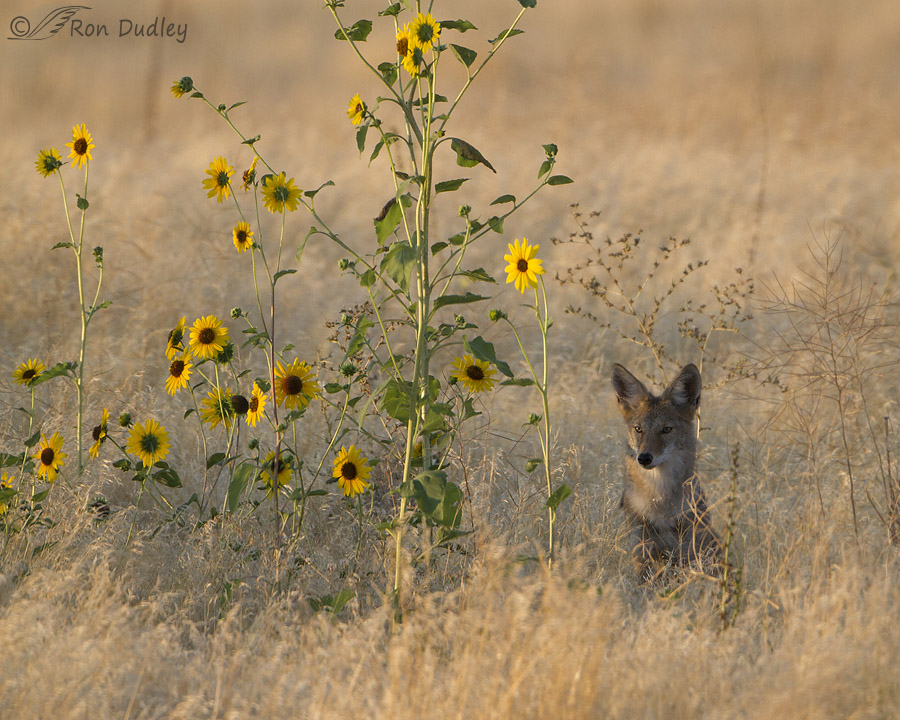
This coyote on antelope island was using the sunflowers and their shade as cover while hunting or trying to hide from me at dawn. In this case I believe it was doing both.
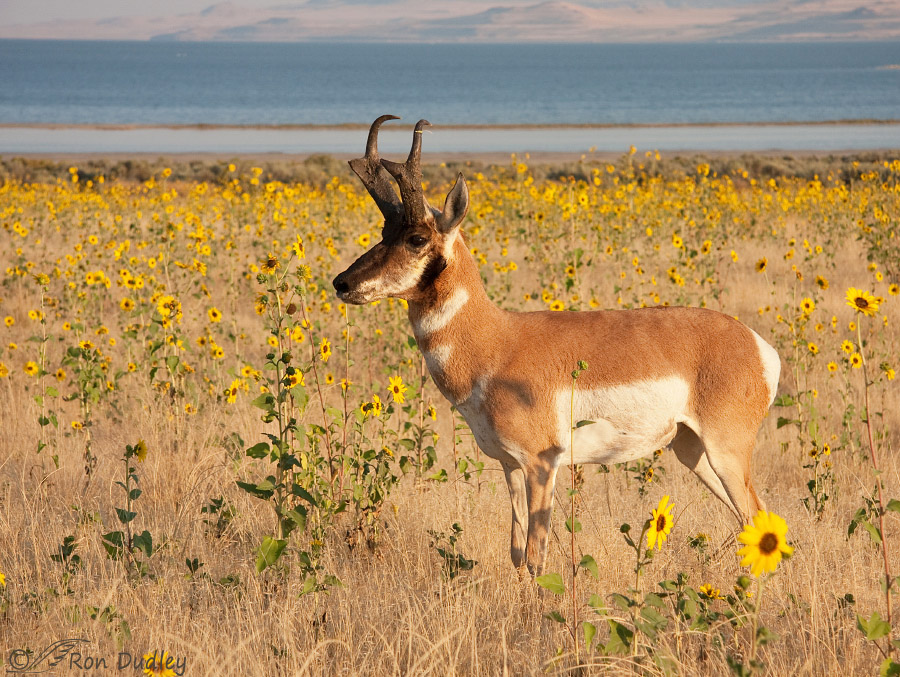
In some years Antelope Island seems like it’s almost completely blanketed in yellow from the blooming sunflowers in late summer and fall and blooming mullein earlier in the summer. And Pronghorns love to eat the sunflowers, going from plant to plant to nip the higher flowers off.
And of course a variety of birds perch on sunflowers, especially Western Meadowlarks, Burrowing Owls and sometimes Horned Larks on the island. But in my experience they seldom do it until the late fall when the flowers have faded and withered. It’s my theory that the stems are a little too flexible for them to make very stable perches when they’re still green. But the other factor of course is those delectable sunflower seeds that aren’t ready until late fall.
Then some birds go nuts over the dried out sunflower heads loaded with seeds and that includes this American Goldfinch and its buddies I photographed yesterday near Farmington Bay WMA.
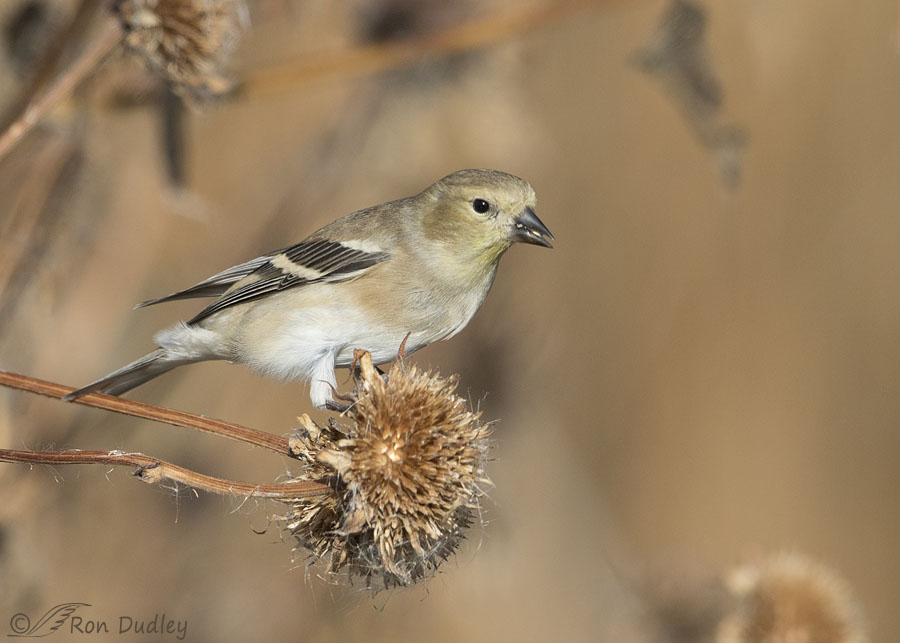
1/4000, f/6.3, ISO 640, Canon 7D Mark II, Canon EF 500mm f/4L IS II USM + EF 1.4 III Extender, not baited, set up or called in
Goldfinches aren’t so colorful this time of year but they sure are hungry as they try to gear up for cold temperatures. It could snow any day now and we’ve often had snow by now in previous years. This one spent a long time working over these two seed heads.
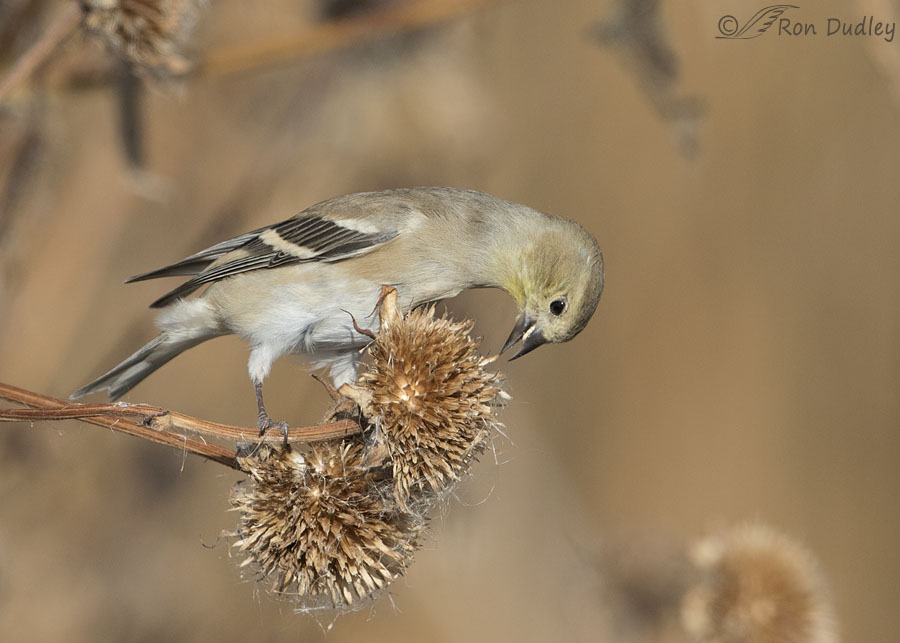
1/4000, f/6.3, ISO 640, Canon 7D Mark II, Canon EF 500mm f/4L IS II USM + EF 1.4 III Extender, not baited, set up or called in
It ate so many seeds I’d be tempted to call it a glutton if I didn’t know what they’re preparing for. There were still many seeds left when the bird got fussy and…
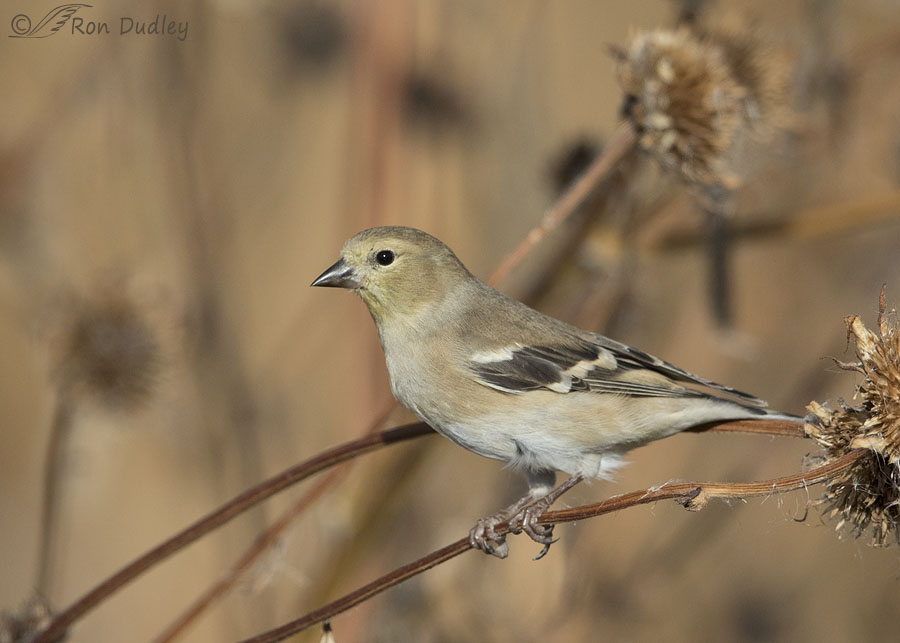
1/4000, f/6.3, ISO 640, Canon 7D Mark II, Canon EF 500mm f/4L IS II USM + EF 1.4 III Extender, not baited, set up or called in
decided to look for better pickings (the next three shots aren’t very good but they help to tell the story).
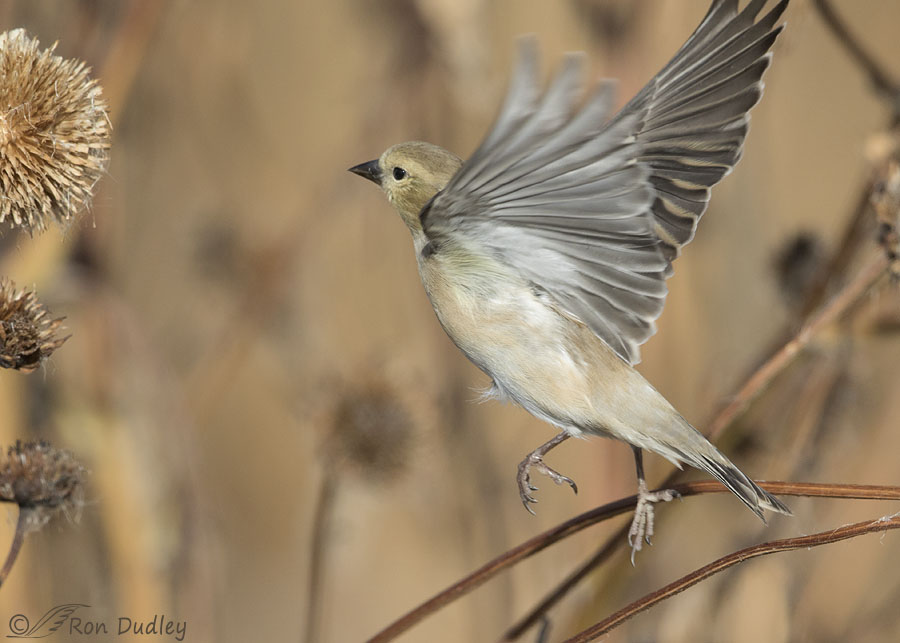
1/3200, f/6.3, ISO 640, Canon 7D Mark II, Canon EF 500mm f/4L IS II USM + EF 1.4 III Extender, not baited, set up or called in
It flew a short distance to the seed head at upper left but…
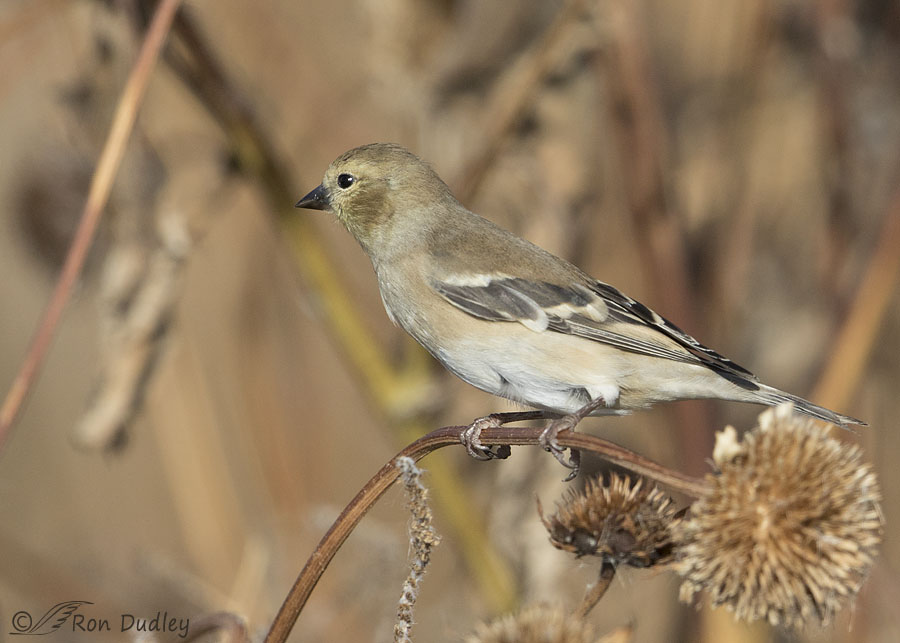
1/4000, f/6.3, ISO 640, Canon 7D Mark II, Canon EF 500mm f/4L IS II USM + EF 1.4 III Extender, not baited, set up or called in
it didn’t like that one much and thought it could do better so it looked around again.
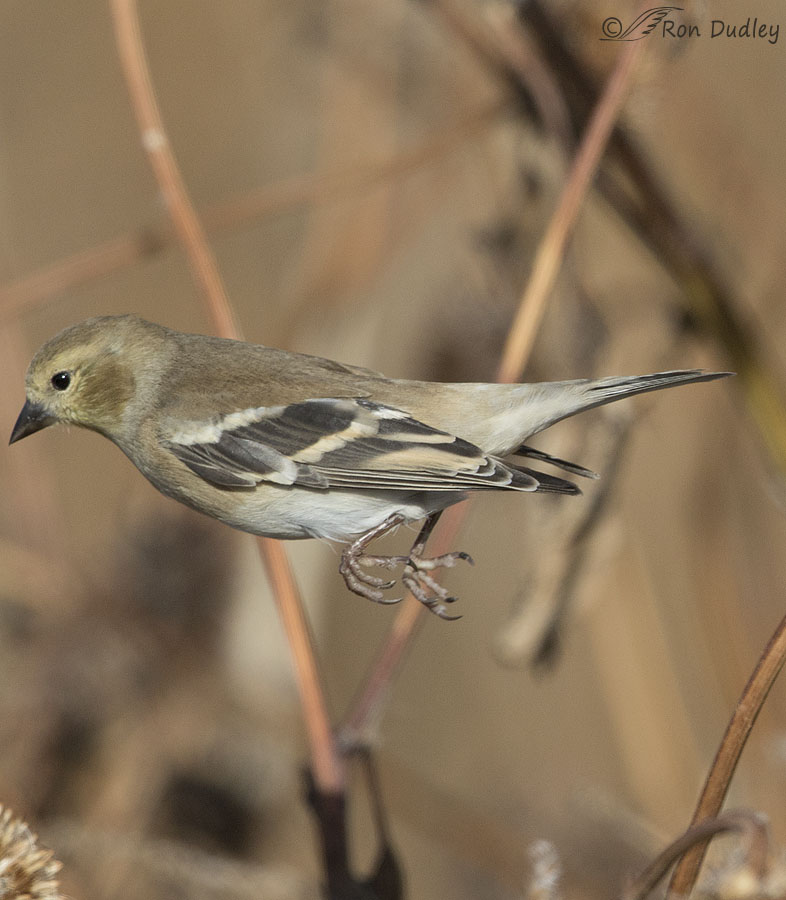
1/4000, f/6.3, ISO 640, Canon 7D Mark II, Canon EF 500mm f/4L IS II USM + EF 1.4 III Extender, not baited, set up or called in
This time it mostly jumped and I damned near didn’t keep it in frame.
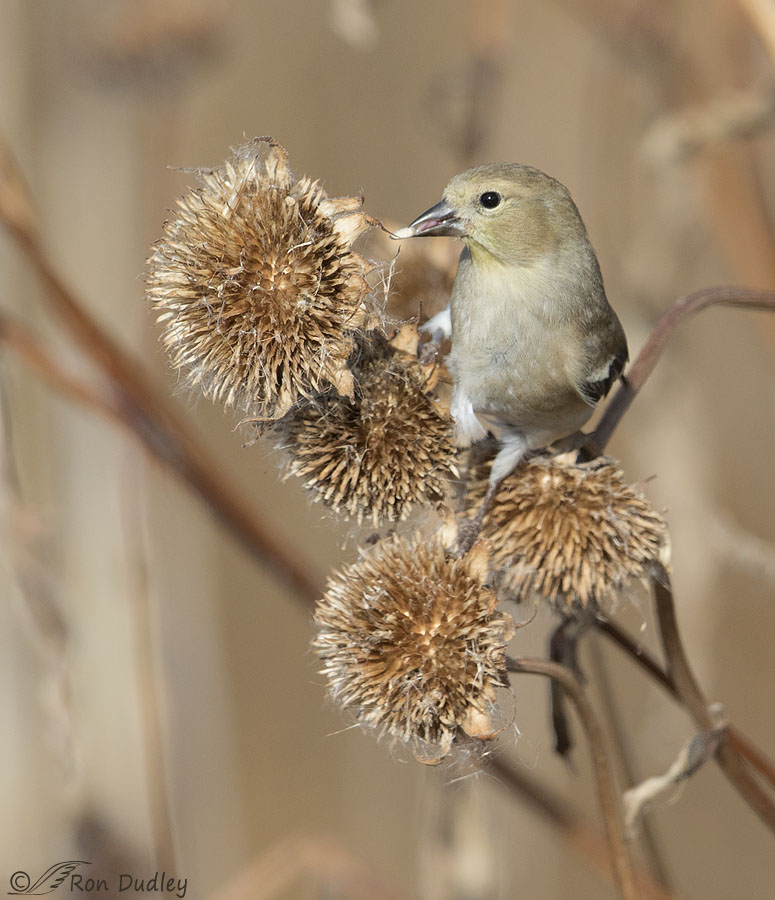
1/1600, f/6.3, ISO 640, Canon 7D Mark II, Canon EF 500mm f/4L IS II USM + EF 1.4 III Extender, not baited, set up or called in
But this time it found goldfinch gold – four seed heads in a cluster and still containing many seeds.
I didn’t do it yesterday but I remember many times in the past photographing birds as they fed on sunflower seeds while I had a gob of the same thing in my own mouth (yes, I do like munching on sunflower seeds).
I’m not sure why, it always made me feel just a little bit silly but I had to smile about our common addiction too.
Ron
PS – The difference between their sunflower seeds and mine is that mine are purchased and loaded with salt. I’ve been diagnosed with chronic low sodium and ordered to consume lots of salt, within reason. I’ve known folks who would kill for that diagnosis.


What a beautiful marvelous series Ron! Thanks for sharing!
Charlotte
Thanks very much, Charlotte.
The Coyote and Pronghorn shots are fantastic! Kudos on keeping the hopping Goldfinch in frame. Woot! Woot! Thank you for the bright sunflowers today. Definitely needed them after the past couple of weeks.
I’m also a sunflower fan — flowers and seeds. Love ’em both!
“Kudos on keeping the hopping Goldfinch in frame
Ha, just barely, Marty. I didn’t have a gnat’s ass to spare! Thank you.
On this side of the world sunflowers are introduced, but our native birds adore them (much to farmer’s chagrin). The birds who eat from our hands will rake through the seeds to select the sunflower seeds first.
A delightful series. Thanks Ron. I hope that you (and we) get our much needed moisture. Soon. We have a bushfire close to us (about 7 kilometres from thes suburbs) and we are watching anxiously. It burnt out of control for two days and has just been contained (unless the wind gets up again). And while our houses are safe at the moment the same is not true for the birds and animals.
Damn, I wish you luck with the fire, EC. Scary, scary stuff!
Me too, EC!!! Here’s hoping the wind stays away for a few days.
What a beautiful post and wonderful pictures. The coyote picture is stunning. You have inspired me to plant native sunflowers next spring to attract some photo subjects1 Thanks.
Good idea, Alice. Thanks and the birds will thank you too.
I really liked today’s photos and story. Very neat that you included several species and they are all native (I think).
Yup, they’re all native, Lyle. To the continent and to Utah.
Love the sunflowers and the seeds. Brings back fond memories of the sunflowers on my MN farm.
The Coyote is quite curious and the right eye in the light really makes that photo a great one.
The Goldfinch is getting ready for winter, for sure.
Thanks for the great series, Ron
Thank you, Alice. I agree about that light in the eye.
This is a great series…I love them all, especially the last…Nice composition and contrasring textures…
I work on composition, Patty. It doesn’t come naturally for me though so I appreciate the feedback on that.
I really like the composition on the last one, too.
The coyote next to the sunflowers made me smile as it is a bit incongruous with most art including sunflowers.
Gorgeous photos! The golden hues are so lovely. And lots of interesting and crisply captured action.
Thanks, Myriam.
What a beautiful coyote! Great series Ron.
Thank you, Cathryn.
Goldfinches seem to like anything in the aster family. I used to have them eating my echinacea (purple coneflower) seeds regularly. I had no idea that Pronghorns ate sunflowers; somehow I think of them just eating sagebrush, since that’s the part of the country they usually live in. Love that you posted the coyote shot. I’m always happy to see them.
Thanks, Susan. That coyote photo is a favorite of mine.
Ron, I know this is “Feathered Photography” and the Goldfinch photos are great, but I love the coyote the most. Beautiful photo with great lighting. The look in his eyes is saying, “Come on Ron, take your pictures and move on so I continue my hunt.” It looks like our Pronghorns are going to be rounded up and relocated to the Tucson area etc. Disgruntled and overtaxed Californians are moving to Prescott in large numbers and we are presently overwhelmed with new developments that are forcing the relocation of our last herds. When we moved here 13 years ago you could go hiking on certain trails guaranteed to see the Pronghorns. No stopping progress, but always a shame to see our wildlife being pushed further and further away.
Everett Sanborn, Prescott AZ
Thanks, Everett. All the development everywhere is terribly disturbing. Something similar is happening at Farmington.
Your whole presentation this morning is so “sunny spirited”–I especially enjoyed the golden glint in the coyote’s eye…….
Thanks, Kris. Funny how a small thing that that light in the coyote’s eye can make such a big, positive difference.
This is a great post – love the Coyote and Antelope images,
We have a Coyote pack suspected of being a Coywolf pack due to the single howling of one of the members, similar to the sound of wolves I heard in Canada.
Our goldfinches have stripped our sunflower seed heads. A Gray Squirrel climbed up one stalk and was very disappointed.
New operating system – we’ll see how long this lasts.
Yay, you’re back, Dick! Someone somehow must have figured out why you’ve been having trouble commenting and fixed it.
I’ve heard that virtually all of your coyotes up there are now coywolves or coydogs. Is that true?
That is what I believe from stuff I’ve read and heard. But people around here are having a hard time believing it. I think when people have limited experience with nature/wildlife it is difficult for them to assimilate that a coyote and wolf hybrid actually exists. They are beginning to come around though.
Interesting that I just put in a new Apple operating system (update) and decided to try to enter your blog, with the hope that this would work. It did, so far!
Good, you’ve been missed.
What a fun series! It’s a good thing the sunflowers produce so much see between critters eating the flowers and, of course, the seeds! We’ve had some late travelers – gold finches – at the feeder the past few days gobbling the sunflower seeds.
It’s a good thing the sunflowers produce so much see between critters eating the flowers and, of course, the seeds! We’ve had some late travelers – gold finches – at the feeder the past few days gobbling the sunflower seeds.  Love the coyote photo – it’s pose, coloring, and VERY pricked ears make for a great shot. Yes, many would kill for a low sodium diagnosis!
Love the coyote photo – it’s pose, coloring, and VERY pricked ears make for a great shot. Yes, many would kill for a low sodium diagnosis!  Wind and rain last night – snow for the mountains in theory – good place for it!
Wind and rain last night – snow for the mountains in theory – good place for it! 
Judy, in that coyote shot I think the glint of light in its right eye with the rest of the face shaded makes all the difference. Little things, ya know…
I envy your rain and snow. We need it desperately!
We also need it badly so not whining tho I’m sure some big game hunters in the area aren’t happy given our abundance of “gumbo”!
Man, do I ever remember that gumbo from my days growing up on the MT farm!